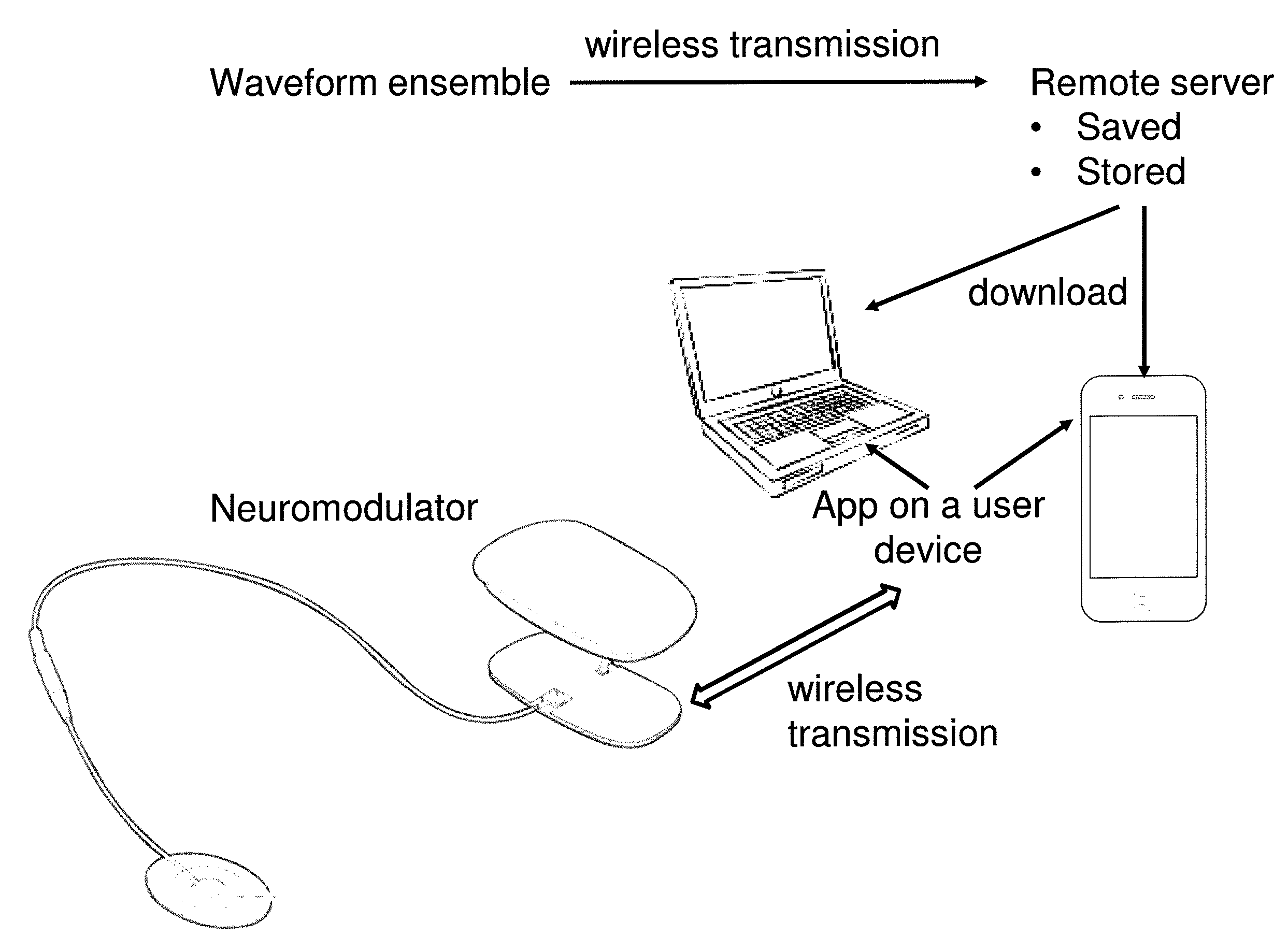Methods for user control of neurostimulation to modify a cognitive state
a neurostimulation and cognitive state technology, applied in the field of neuromodulation, can solve the problems of inability to permit users to adjust predetermined/preconfigured electrical stimulation protocols, available systems are limited in perspective, and existing methods and apparatuses for tes lack the capability of allowing users to control neurostimulation sessions, etc., to achieve the effect of reducing the intensity of stimulation, facilitating user control, and high level of interaction and control of delivery
- Summary
- Abstract
- Description
- Claims
- Application Information
AI Technical Summary
Benefits of technology
Problems solved by technology
Method used
Image
Examples
Embodiment Construction
[0099]The following description of the various embodiments of the invention is not intended to limit the invention to these embodiments, but rather to enable any person skilled in the art to make and use this invention.
[0100]Described herein are methods and apparatuses (including devices and systems) for user control of neurostimulation waveforms, particularly, transdermal electrical stimulation (TES) waveforms. In general, the methods, apparatuses, and systems may allow a user to control neuromodulation with electrical stimulation to induce a beneficial or desired change in cognitive function and / or cognitive state. In general, a user may wear a neuromodulation device and apply one or more waveforms using the neuromodulation device to induce a cognitive effect. In general, the user may control the wearable neuromodulation device through a user device. A user device may be used to control the applied waveforms (“ensemble waveforms”) for use in a transdermal electrical stimulation pr...
PUM
 Login to View More
Login to View More Abstract
Description
Claims
Application Information
 Login to View More
Login to View More - R&D
- Intellectual Property
- Life Sciences
- Materials
- Tech Scout
- Unparalleled Data Quality
- Higher Quality Content
- 60% Fewer Hallucinations
Browse by: Latest US Patents, China's latest patents, Technical Efficacy Thesaurus, Application Domain, Technology Topic, Popular Technical Reports.
© 2025 PatSnap. All rights reserved.Legal|Privacy policy|Modern Slavery Act Transparency Statement|Sitemap|About US| Contact US: help@patsnap.com



